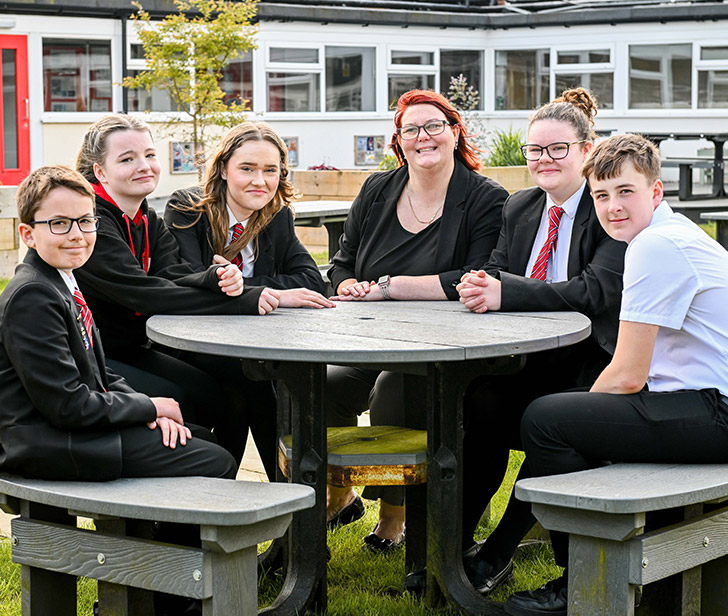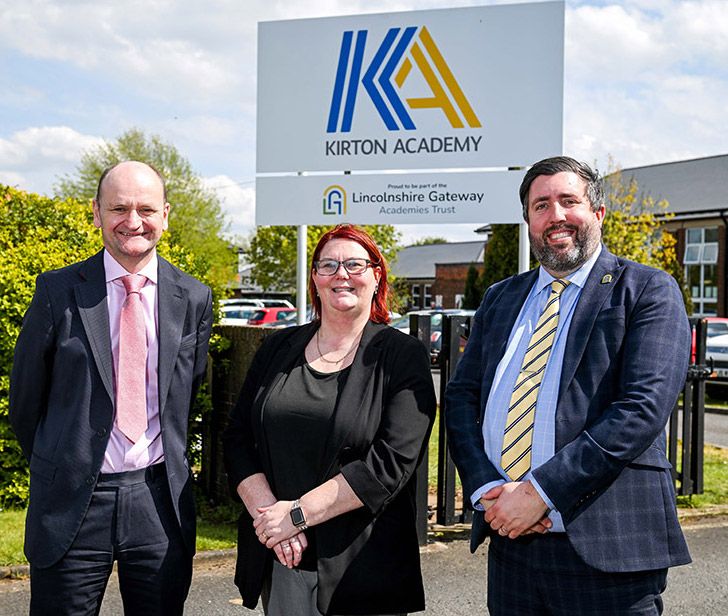Music
1. Rationale
At Kirton Academy we believe that all students are entitled to a high-quality music education Our aim is to engage and inspire pupils to develop a love of music and to realise their talent as musicians, and so increase their self-confidence, creativity and sense of achievement. Embedding the enjoyment and sense of community music performance can create is very important to us as a school and so we look to provide students with opportunities to perform to a wider audience. This is through a combination of in school events such as House Music competitions, through to more public events such as the Christmas Concert or taking part in community events in the local area.
2. Aims
The National Curriculum for music aims to ensure that all pupils:
- Perform, listen to, review, and evaluate music across a range of historical periods, genres, styles and traditions, including the works of the great composers and musicians.
- Learn to sing and to use their voices, to create and compose music on their own and with others, have the opportunity to learn a musical instrument, use technology appropriately and have the opportunity to progress to the next level of musical excellence.
- Understand and explore how music is created, produced, and communicated, including through the interrelated dimensions: pitch, duration, dynamics, tempo, timbre, texture, structure and appropriate musical notations.
3. The rationale for Sequencing (Scope and Rigour)
Our Music Curriculum matches the National Curriculum by encompassing the main skills of performing, composing, listening and appraising. For each unit, students are given a range of tasks and activities that are designed to build and challenge students' practical and music theory skills. Students are given the opportunity to learn a variety of musical instruments as well as building singing skills and confidence. This is executed through a range of practical activities where students work, most frequently, in pairs or small groups. Students learn notable, well-known pieces and are taught to create their own music, using stylistic features and devices. Listening skills are applied in every unit of work, with activities designed to build critical listening skills and music analysis. Students are taught to discuss and describe music with increasing coherence, through the use of key words and music vocabulary. As Music Technology is used extensively in KS4, this is introduced in a basic format in KS3 - using industry standard notation and sequencing software.
The units of work are structured to allow for progressive understanding and a development in instrumental skills. Each unit builds upon skills and knowledge learnt previously. Music is a multi-faceted subject that requires time and practise to learn and understand. Students are encouraged to take part in lunch time clubs such as the Choir, sign up for specialist music lessons by visiting tutors and are open to use to small studios to explore their own music.
Cognitive load theory
The skill of reading music is akin to learning an entirely new language. This can easily cause students' working memory to become overloaded. Through pre-teaching, segmentation, repetition and retrieval practice we aim for musical understanding to be processed from the working memory into the long-term memory in manageable chunks. It takes vast amounts of practise and repetition before it becomes more fluent. It is therefore weaved into every unit of work, so that all students can follow it to some degree. Music terminology can be tricky to comprehend, due to the range of languages used (Italian, Latin, French, Spanish etc.). Key words and vocabulary are used and referred to in every lesson, regardless of the topic, in the hope and expectation that the musical language becomes second nature to students.
4. Research informing the Sequencing decisions.
Both Rosenshine's Principles of Instruction and Cognitive Load Theory have informed our curriculum sequencing and implementation. Both recognise the importance of memory in building schemas required to develop mastery and retention. Our schemes of work are sequenced so that students revisit skills and build upon prior learning over time, chunking more complex concepts into smaller parts. By limiting the amount of new information students are exposed to at one time, we can check understanding before moving the learning on. A scaffolded approach, combined with modelling and step by step success criteria means students are exposed to new skills and concepts gradually, building strong foundations and links across texts and skills.
5. Key Themes
| Key Theme | Overview |
|---|---|
| Tonality | Major, minor and modal tonalities. Students need to be confident recognising different tonalities and being able to explain their significance in a piece of music. Students needs to be confident in composing a piece of music using different tonalities. |
| Texture and Structure | Students need to be able to recognise different textures and structures in a range of musical genres. Students need to be able to compose using a range textures and structures and should be able to understand how different genres use different structures and textures. |
| Melody | Students need to be able to recognise the importance of melody in a piece of music. Students need to be able to compose a melody and develop that melody over time. Students should be able to listen to a basic melody and be able to transcribe that melody on to their principal instrument. |
| Harmony | Students need to be able to recognise a range of chords and their importance to music. Students should be able to play a range of minor and major chords on a variety of instruments and more advanced chords on their principal instrument. Students should be able to compose using a variety of chords and be able to understand and explain their effect on the listener. |
| Tempo and Rhythm | Students should be able to confidently recognise different rhythms and their use in different genres of music. Students should be able to perform rhythms in different time signatures with a range of complexity. Students should be able to compose music with interesting and idiomatic rhythms. |
| Pitch and Dynamics | Students should be able to confidently recognise pitch and different |
Download — 5-Year Learning Journey
Download — Curriculum Overview


